COMMON DISEASES
Black Spot is a disease that most often infects roses in warm weather and high humidity. Infection mostly occurs from spores splashing up onto the new growth from the fallen leaves and stems. On occasion, the spores can be brought in by air movement. Therefore, removing infected canes and leaves from the area is the best means of pest control. This disease is easy to recognize. The infection starts as black patches on upper leaf surface. These patches will darken. Later the black patches will be accompanied by yellowing in the leaves. The infected leaf will eventually fall from the stem. These leaves are most susceptible while leaves are new. To germinate, the spores have to be wet for at least 9 hours. This is why running the sprinklers at night is not a good idea. After this wetting, a germ tube from the spore invades the leaf. The symptoms will appear over a week. New spores will form in 10 days. Black Spot will also appear on young stems as raised purple-black blotches. Stems that fall to the ground are the best place for the fungus to hide.
Control with:
Bayleton – Systemic Fungicide
Captan Fungicide
Dithane M-45 Fungicide
Liquid Ornamental and Vegetable Fungicide
Thiomyl Systemic Fungicide.
BANNER MAXX is also highly effective for use in commercial nurseries.
It is best to use a Spreader-Sticker with these materials
POWDERY MILDEW appears as slightly blistered red areas on the upperside of leaves. The white growth will later appear. The leaves will become twisted and deformed. Much older leaves will probably be unaffected. Flowers and young stems will also be covered with white fungal growth. This disease usually occurs in the months of cool nights (high humility) and warm days (low humidity). The leaf surface must be moist for germination but only for 2 hours. Most of the infection occur from airborne spores.
Control with:
SYSTEMIC FUNGICIDE WITH BAYLETON
LIQUID COPPER FUNGICIDE
LIQUID ORNAMENTAL, & VEGETABLE FUNGICIDE
SULFUR
THIOMYL SYSTEMIC FUNGICIDE.
RUBIGAN is also used by commercial nurseries.
RUST goes unnoticed in the spring. Early in the infection, rust may be seen with a magnifying lens. In the summer, the plant becomes covered with a red-orange coating that distorts leaves and injures canes. The initial infection occurs during the winter but the symptoms are not apparent until it is too late. Rust is air borne, entering the stomata when humidity (moisture on leaves) is high and the temperature is low (around 62 F) Rust is usually not seen because fungicides used in the spring prevent this summer infection.
Control with:
BAYLETON SYSTEMIC FUNGICIDE
LIQUID COPPER FUNGICIDE FLOWABLE
LIQUID ORNAMENTAL, & VEGETABLE FUNGICIDE
THIOMYL SYSTEMIC FUNGICIDE
VERTICILLIUM WILT starts as wilting of leaves at the tips of young stems and a yellowing of lower leaves. Later the cane will wither and die. The disease in easily confused with a thirsty plant during the midsummer but the wilt is accompanied by black marks on the cane. Some leaves will appear brownish and chlorotic. Some leaves will appear deformed. This fungus is different because it is “soil borne”. The infection comes from the ground. Perhaps the ground was once used for vegetables. The only control that is recommended is a soil drench with Thiomyl Systemic Fungicide.
DOWNY MILDEW caused by has symptoms similar to powdery mildew on the underside of the leaves. What is different is the dark irregular and yellow areas that develop on the top side of the leaf. Leaves are very quick to fall off. In Florida, we will only see downy mildew during the winter months after some cold, damp nights.
Control with:
CAPTAN FUNGICIDE
LIQUID COPPER FUNGICIDE
DITHANE M-45 FUNGICIDE
LIQUID ORNAMENTAL, & VEGETABLE FUNGICIDE
BOTRYTIS BLIGHT or Cane blight appears as black spots on brown, dead canes. This same fungus will wilt bud quickly with black areas and a brown halo. A combination of Dithane M-45 Fungicide and Thiomyl Systemic Fungicide is recommended.
COMMON INSECT PESTS
APHIDS are red or green, wingless, about 1/10 inch long (use magnifying glass), mostly found of new growth. Aphids will cause curled leaves and malformed flowers.
Control with:
Malathion 50% EC
Triple Action Neem Oil
Natural Pyrethrin Concentrate
THRIPS injure only flowers. Infested flowers will develop white spots or fail to open before shedding. Thrips are a elongated, light-brown insect about 1/8 inch long. Thrips hide mostly at the base of the flower. Thrips breeding goes nuts when the citrus are in bloom. Spot spraying the blooms is best.
Control with:
Malathion 50% EC
Natural Pyrethrin Concentrate
Conserve – Naturalyte insect control
RED SPIDER MITES appear as fine grains of sand (under a magnifying glass they appear as spiders). These mites dwell on the leaves. Red spider mites favor hot, dry weather. The leaves will turn yellow and fall off.
Control with:
NATURAL PYRETHRIN CONCENTRATE
PARAFINE HORTICULTURAL OIL
TRIPLE ACTION NEEM OIL
For commercial nurseries, products such as AVID, ORTHENE, MAVRIK, MERIT and SANMITE may be more cost-effective when treating large areas.
Only spray insecticide if there is a problem; spraying insecticides when there is no injury seen can sometimes destroy the reason that you do not have a problem.
ROSES AND HERBICIDES
Roses are all very sensitive to all post emergent herbicides: Round-up, Atrazine, etc. Cover roses while spraying herbicides. Some pre-emergent herbicides may be used in rose beds, like SURFLAN.
FERTILIZERS
NUTRIENT DEFECIENCIES can be seen on roses as fading, yellowing patterns, and browning. None of these should be seen with a fertilizer program containing magnesium and iron.
Recommendation using a Chelated Nutritional, IRON GRANULES for iron deficiencies, or MAGNESIUM SULFATE for magnesium deficiencies. May we also suggest using CONTROLLED – RELEASE FERTLIZER 18-6-12 with Osmocote or PowerPak 20-20-20 Water Soluble Fertilizer with micro to fertilize your rose.


